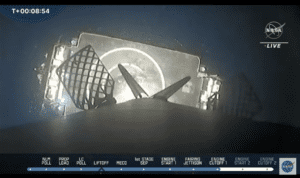
Edinburgh, 24 November 2021. – NASA successfully launched the Double Asteroid Redirection Test (DART) mission this morning on SpaceX’s Falcon 9 rocket.
The aim of the mission is to demonstrate that sending a large, high-speed spacecraft into the path of an asteroid could change its motion.
DART will now deploy its Roll Out Solar Arrays (ROSA) to provide the power needed for its solar electric propulsion system. The spacecraft is equipped with onboard camera (DRACO) and sophisticated autonomous navigation software as well. DART is a planetary defence-driven test of technologies for preventing a potential hazardous impact by an asteroid.
It is also the first demonstration of the kinetic impactor technique. The spacecraft is designed to direct itself to impact moonlet Dimorphos orbiting a larger asteroid named Didymos, while traveling at a speed of 24,000 kph. DART will impact Dimorphos in late September 2022, when the Didymos system is within 11 million kilometers of Earth. The target was chosen for the DART mission because it poses no actual threat to Earth.
The collision will change the speed of the 160-metre moonlet in its orbit by a fraction of one percent, altering its orbital period by several minutes. Scientists will be able to measure this change with ground-based telescopes.
 SpaceWatch.Global An independent perspective on space
SpaceWatch.Global An independent perspective on space




